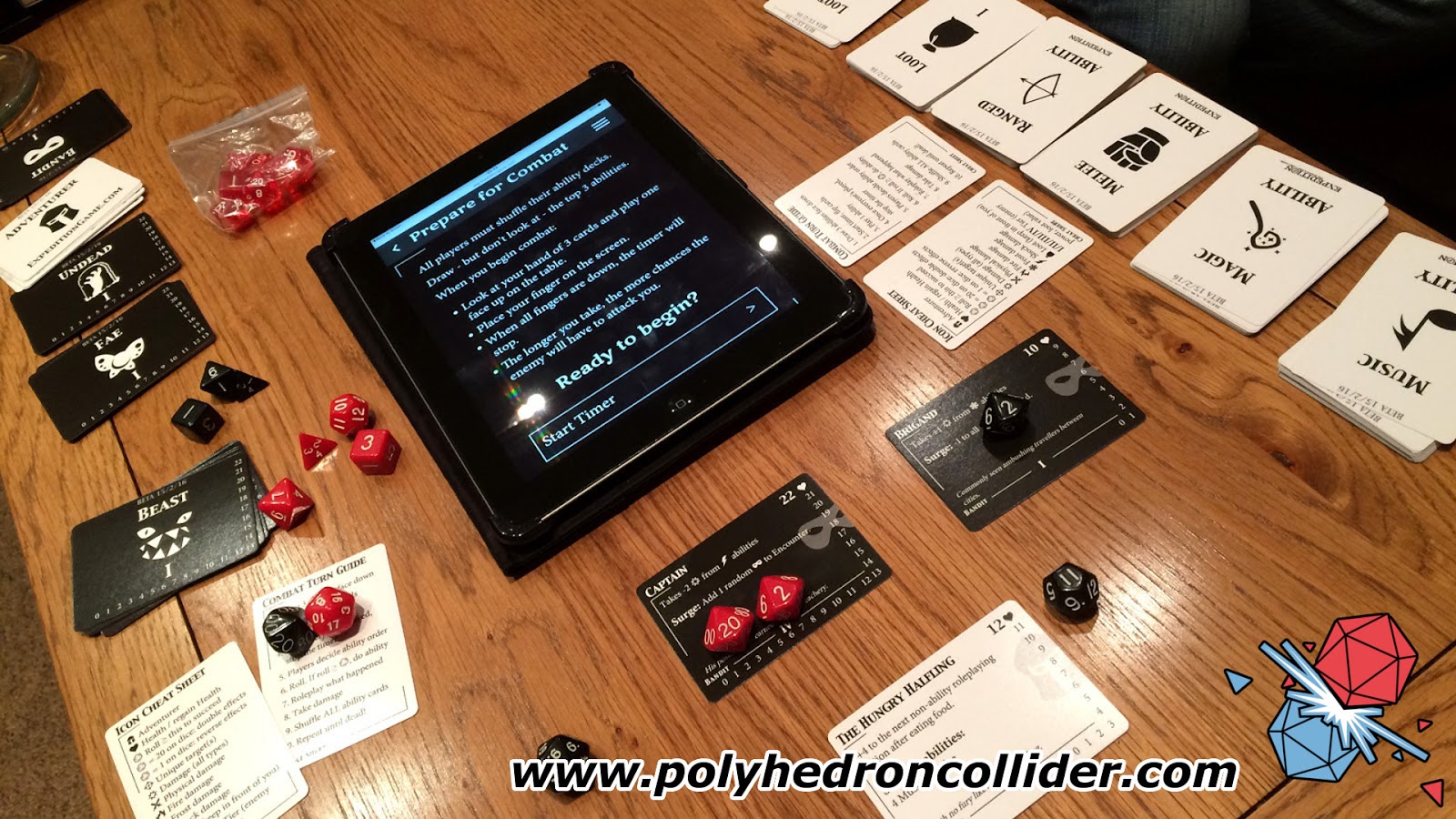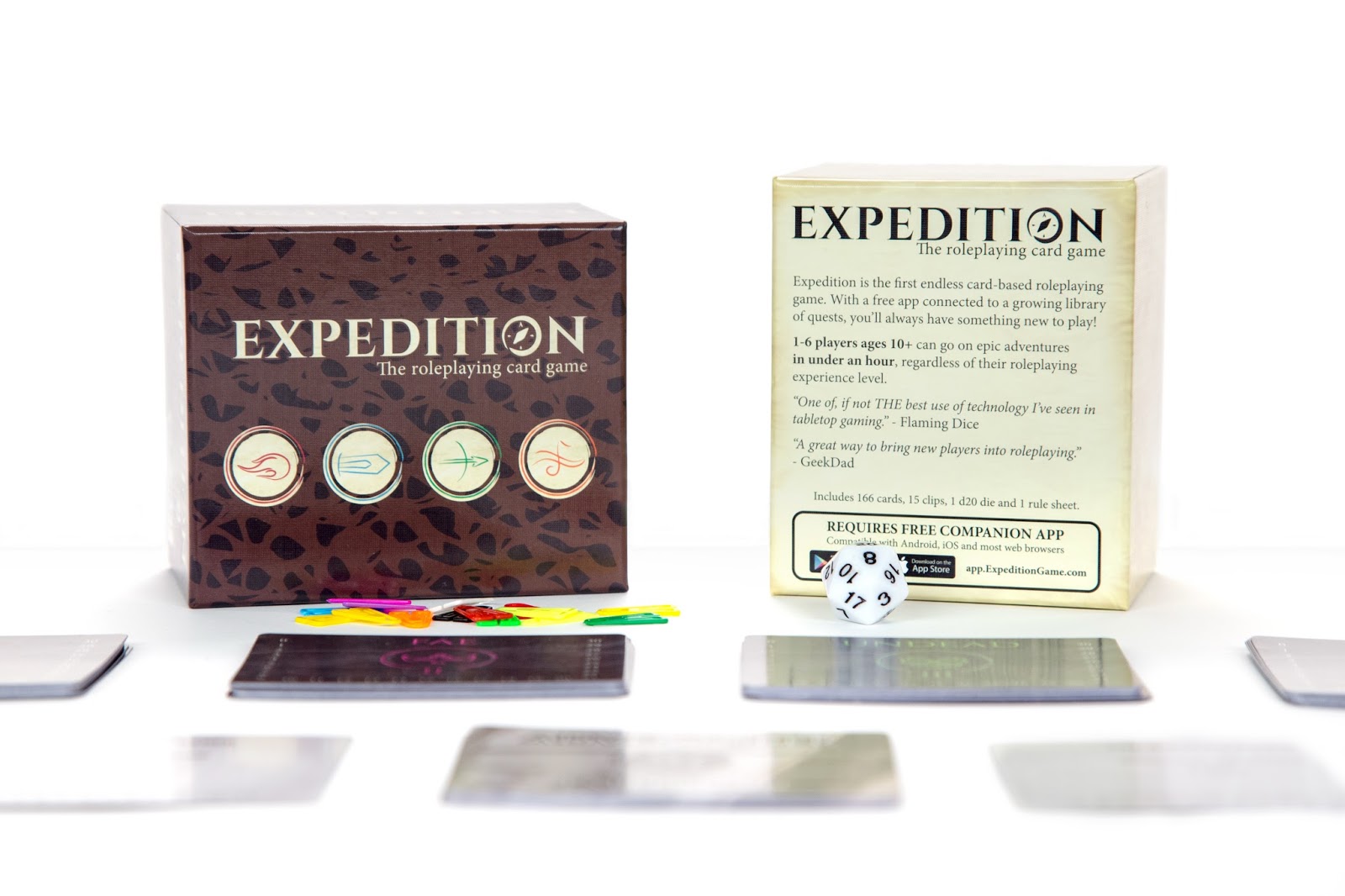Todd Medema from Expedition: The Roleplaying Card Game here. Polyhedron
Collider was generous enough to review our first game’s Kickstarter
launch, which doubled its goal. We wanted to return the favour by
sharing some of the tips and techniques we learned from our campaign to
make your next launch more successful!
First and foremost, we want to dispel the myth that Kickstarter is a tool for finding out if people want your game or not. Doing market research is easy - but launching a Kickstarter is hard. You’ll save yourself a lot of work by doing the market research before you even start thinking about a Kickstarter. We think of market research as answering three important questions about your game idea: Do people want the idea? Does your game do a good job of capturing the idea? What are people willing to pay for the idea?
The first is really easy - just talk to people! Go to board game stores, events, online communities, and pitch your game. Or, if you’re looking for an idea, talk with people about what games they enjoy - and what they don’t like about them. The purists among us might claim that this is stealing, and they only want to come up with “original” board game ideas - but “originality” is a myth that will hold you back from actually being creative. With Expedition, we started with the concept of “Dungeons & Dragons… but faster and less intimidating.” Make sure that you listen to what they say, too. With Expedition, we stubbornly dismissed the idea of upgrading our art until later in our campaign when the feedback was overwhelming, no doubt costing us thousands in lost pledges.
The second requires you to start prototyping your game. You’ll of course need a prototype of your game to show off in your Kickstarter… but you’ll want to start on this as early as possible. For one, Kickstarters aren’t a great place to gather feedback on your product. If you get 1,000 people to view your Kickstarter page and only 2 back it… you’ll never know why the other 998 didn’t. On top of that, the sooner you start building interest in your game, the more people will be following your game and view / share it on Kickstarter. With Expedition, we prototyped for about a year before launching, including making the beta PDF available free online. By the time we launched, we had a mailing list of over 700 people interested in the game - without spending a penny on advertising. Giving away your game might seem like a crazy way to not make money as a business, but here’s the thing: giving away your game is actually advertising that doesn’t cost you anything. The board game market is so large that you’ll never reach every single gamer, so we focused on expanding as fast as possible rather than milking a few customers for every dollar possible.
Finally, price. You’ll want to talk with at least 3 manufacturers before launching to make sure you have a good estimate for how much your game will cost to make at low volumes - and how much cheaper it’ll get at high volumes (informing what stretch goals are possible). Even if you see other games on the shelf with the same number of components at that price, don’t assume you can get that same price! Manufacturing has huge economies of scale, so you might only be able to produce those fancy upgradable dice if you order 100,000 copies. Just as importantly, don’t think that manufacturing it at $10 means you can sell it at $10 - or even $15. There’s a reason companies usually mark up their games 2x.
You’ll have many other costs of business, such as incorporating, taxes, unexpected issues, refunds and payment processing fees… and if your backers are willing to pay for your game, that means they want to see your business last long enough to make it. Plus, if you decide to go the retail route, you’ll have to sell your game at at least 3x cost (since stores alone will take a 2x markup), so your backers will still be getting a deal. Price can be an important part of whether or not people back your game, so make sure to test this with your target audience. Munchkin for $30 is a fun party game - but Munchkin for $80 would have to be a much different game for a much different audience.
Another way to put this is, don’t launch your Kickstarter until you’re sure it’ll succeed. You should have already validated that gamers are interested in the concept, like your execution, and are willing to buy it at your price point. You should have the contact information for enough people who’ve played and are excited about your game that you’ll be able to reach your funding goal.
Launching a crowdfunding campaign is a huge adventure - and we’re doing it again right now with Expedition’s first expansion on Kickstarter. Good luck on your next quest, and feel free to drop us a line at ExpeditionGame.com/contact!





No comments:
Post a Comment